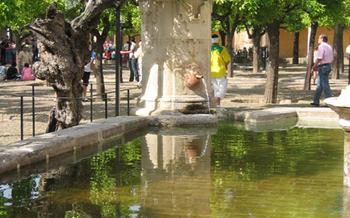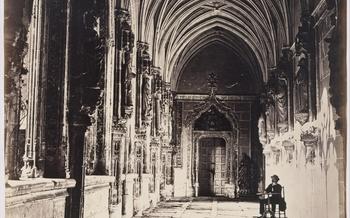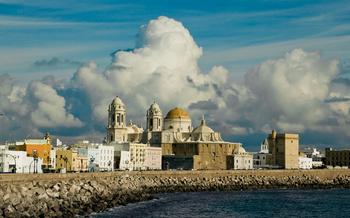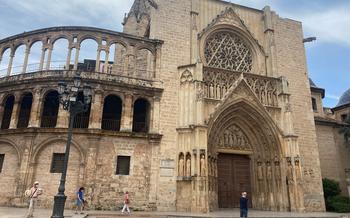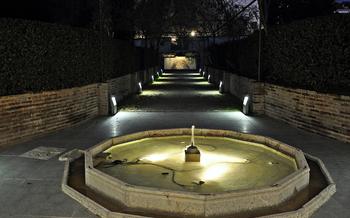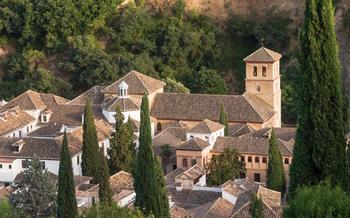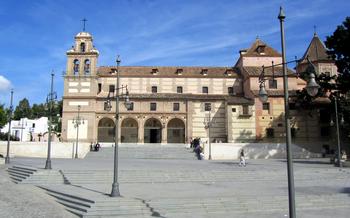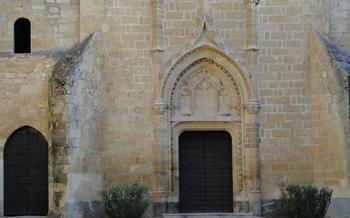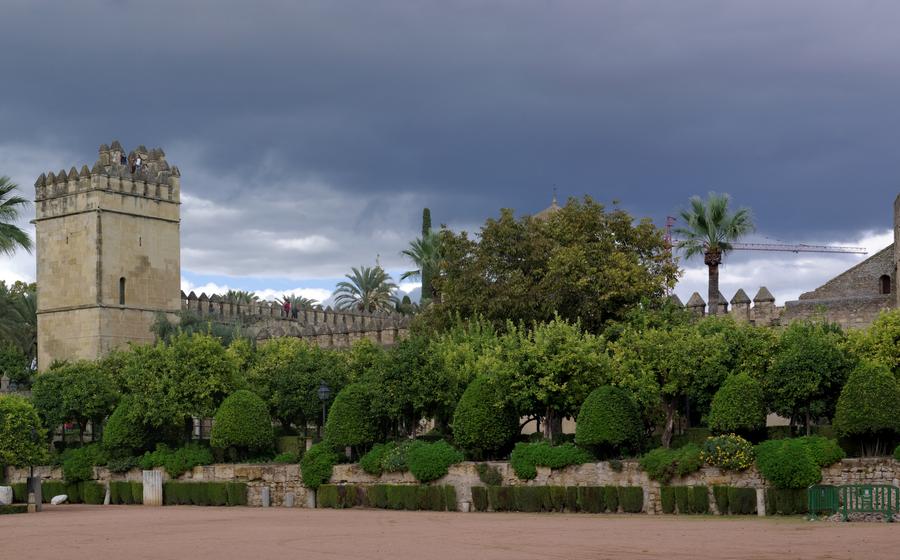
Ermita de Nuestra Señora de la Candelaria
- History of the Ermita de Nuestra Señora de la Candelaria
- Location of the Ermita de Nuestra Señora de la Candelaria
- Description of the Ermita de Nuestra Señora de la Candelaria
- The Legend of the Ermita de Nuestra Señora de la Candelaria
- The Pilgrimage to the Ermita de Nuestra Señora de la Candelaria
- The Virgen de la Candelaria
- The Celebrations in Honor of the Virgen de la Candelaria
- The Museum of the Ermita de Nuestra Señora de la Candelaria
- The Sanctuary of the Ermita de Nuestra Señora de la Candelaria
- Visiting the Ermita de Nuestra Señora de la Candelaria
- Things to See in the Ermita de Nuestra Señora de la Candelaria
- Things to Do in the Ermita de Nuestra Señora de la Candelaria
- Tips for Visiting the Ermita de Nuestra Señora de la Candelaria
- Additional Information about the Ermita de Nuestra Señora de la Candelaria
- Insider Tip
History of the Ermita de Nuestra Señora de la Candelaria
The Ermita de Nuestra Señora de la Candelaria is a hermitage located in the city the 15th century by the Catholic Monarchs, King Ferdinand and Queen Isabella. They were devout Catholics and were instrumental in the construction of many churches and monasteries throughout Spain. The Ermita de Nuestra Señora de la Candelaria was built on the site of a former mosque and was dedicated to the Virgin Mary, who is the patron saint of Córdoba.
The Catholic Monarchs were instrumental in the construction of the hermitage, as they were devoted Catholics and played a key role in the spread of Christianity throughout Spain. The construction of the Ermita de Nuestra Señora de la Candelaria is a testament to their faith and their commitment to the Virgin Mary.
Location of the Ermita de Nuestra Señora de la Candelaria
The Ermita de Nuestra Señora de la Candelaria is located in the city of Córdoba, and the surrounding countryside.
To get to the hermitage, you can take a bus or a taxi from the city center. The bus stop is located near the Plaza de las Tendillas, and the taxi stand is located near the Puerta del Puente. You can also walk to the hermitage, but it is a long and uphill walk.
Description of the Ermita de Nuestra Señora de la Candelaria
The Ermita de Nuestra Señora de la Candelaria is a small, yet impressive, hermitage located in the heart of the Sierra Morena mountains. Its exterior is characterized by its whitewashed walls and its simple, yet elegant, façade. The entrance to the hermitage is framed by a beautiful Renaissance-style doorway, which is adorned with intricate carvings.
The interior of the hermitage is equally impressive. The nave is divided into three sections by two rows of columns. The central section is the largest and is home to the main altar. The side sections are smaller and are home to two side altars. The ceiling of the nave is decorated with beautiful frescoes, which depict scenes from the life of the Virgin Mary.
The artistic heritage of the hermitage is also significant. The main altar is a masterpiece of Baroque art and is home to a beautiful statue of the Virgin Mary. The side altars are also impressive and are home to statues of various saints. The hermitage also houses a number of other works of art, including paintings, sculptures, and tapestries.
The Legend of the Ermita de Nuestra Señora de la Candelaria
The Ermita de Nuestra Señora de la Candelaria is steeped in legend and a hermitage on the spot where she had appeared, and promised that the hermitage would become a place of pilgrimage and devotion.
María Sánchez obeyed the Virgin Mary's instructions and built the hermitage. Once the hermitage was completed, a miraculous event occurred: an oil lamp that was placed in the hermitage remained lit for over 50 years without any oil being added. This miracle attracted pilgrims from all over the region, and the Ermita de Nuestra Señora de la Candelaria soon became one of the most important pilgrimage sites in Spain.
The devotion to the Virgin Mary at the Ermita de Nuestra Señora de la Candelaria has continued to grow over the centuries. Today, the hermitage is visited by millions of pilgrims each year, who come to pray to the Virgin Mary and to seek her intercession.
The Pilgrimage to the Ermita de Nuestra Señora de la Candelaria
The pilgrimage to the Ermita de Nuestra Señora de la Candelaria is a centuries-old tradition that takes place every year from February 1st to 3rd. Pilgrims from all over Spain and beyond flock to the hermitage to pay homage to the Virgin Mary and to seek her blessings.
The pilgrimage begins on February 1st, when the pilgrims gather at the hermitage for a traditional mass. After the mass, the pilgrims process through the streets of Córdoba, carrying the statue of the Virgin Mary. The procession is followed by a feast and a fireworks display.
On February 2nd, the pilgrims attend another mass and then participate in a candlelight vigil. The vigil lasts all night, and the pilgrims take turns praying and singing hymns to the Virgin Mary.
On February 3rd, the pilgrimage concludes with a final mass and a farewell procession. The pilgrims then return to their homes, carrying with them the blessings of the Virgin Mary.
The pilgrimage to the Ermita de Nuestra Señora de la Candelaria is a deeply moving and spiritual experience. It is an opportunity for pilgrims to come together and to celebrate their faith. The pilgrimage is also a reminder of the importance of the Virgin Mary in the lives of Spanish Catholics.
The Virgen de la Candelaria
The Virgen de la Candelaria is the patron saint of the city of Córdoba and is one of the most venerated images in Spain. The Virgin is depicted as a young woman with a baby Jesus in her arms. She is usually dressed in a white robe and a blue mantle. The Virgin Mary holds a candle in her right hand, representing the light of faith. The Virgin Mary of Candelaria symbolizes the concept of light. It is a source of illumination, direction and illumination for the faithful, who see the Virgin as a guiding force, a source of inspiration and protection on their journey through life.
In fact, the name Candelaria derives from the Latin word "candela", meaning "candle". The devotion to the Virgin of Candelaria is widespread throughout Spain and Latin America, and there are many churches and shrines dedicated to her. The "Virgen de la Candelaria" is a symbol of the city of Córdoba and is deeply rooted in the culture and traditions of the city. The image of the Virgin Mary is carried in procession through the streets of Córdoba every year on February 2nd, the feast day of the Virgin of Candelaria. This procession is one of the most important religious events in the city and attracts thousands of pilgrims and visitors.
The Celebrations in Honor of the Virgen de la Candelaria
The celebrations in honor of the Virgen de la Candelaria take place every year on February 2nd. The festivities begin on the eve of the feast day with a traditional procession. The procession winds its way through the streets of the city, carrying the image of the Virgin Mary. The procession is followed by a mass in the hermitage. On the day of the feast, there is a solemn mass in the hermitage, followed by a procession. The procession is accompanied by music and dancing. The festivities culminate with a fireworks display.
The celebrations in honor of the Virgen de la Candelaria are a major event in Córdoba. They are a time for the people of the city to come together and celebrate their faith. The celebrations are also a major tourist attraction, drawing visitors from all over the world.
The Museum of the Ermita de Nuestra Señora de la Candelaria
The museum of the Ermita de Nuestra Señora de la Candelaria is a small museum located in the hermitage. The museum exhibits religious art and artifacts related to the history of the hermitage and the devotion to the Virgin Mary. Among the exhibits are paintings, sculptures, vestments, and liturgical objects. The museum also has a section dedicated to the history of the pilgrimage to the hermitage. It is a must-see for anyone interested in the history and culture of Córdoba.
The museum is open to the public from Tuesday to Sunday from 10:00 am to 2:00 pm and from 4:00 pm to 6:00 pm. Admission is free. The museum is a valuable resource for learning about the history and significance of the Ermita de Nuestra Señora de la Candelaria.
The Sanctuary of the Ermita de Nuestra Señora de la Candelaria
The sanctuary of the Ermita de Nuestra Señora de la Candelaria is Spain. The sanctuary is a complex of buildings that includes the hermitage, a museum, a pilgrim hostel, and a gift shop.
The hermitage is the most important building in the sanctuary. It is a small, whitewashed building with a simple, yet elegant façade. The interior of the hermitage is decorated with beautiful frescoes and sculptures. The main altar is home to a statue of the Virgin Mary, which is said to be miraculous.
The museum of the sanctuary tells the story of the apparition of the Virgin Mary and the history of the pilgrimage. It also houses a collection of religious art and artifacts. The pilgrim hostel provides accommodation for pilgrims who come to visit the sanctuary. The gift shop sells souvenirs and religious items.
The sanctuary of the Ermita de Nuestra Señora de la Candelaria is a place of great spiritual significance. It is a place where people can come to pray, to seek solace, and to find hope. The sanctuary is also a popular tourist destination, and it is one of the most visited shrines in Spain.
Visiting the Ermita de Nuestra Señora de la Candelaria
The Ermita de Nuestra Señora de la Candelaria is open to visitors all year round, but the best time to visit is during the pilgrimage, which takes place on February 2nd. During this time, the hermitage is decorated with flowers and lights, and there is a lively atmosphere in the air.
The hermitage is free to enter, and there are no set visiting hours. However, it is generally open from 9am to 6pm. Visitors are advised to dress respectfully, as the hermitage is a place of worship.
If you are interested in learning more about the history and significance of the hermitage, you can take a guided tour. Tours are available in Spanish and English, and they last for about an hour.
Things to See in the Ermita de Nuestra Señora de la Candelaria
When visiting the Ermita de Nuestra Señora de la Candelaria, there are several notable features that should not be missed. The main altar, with its intricate carvings and gilded details, is a sight to behold. The side altars, dedicated to various saints, are also adorned with beautiful artwork and religious imagery. The choir, located above the main entrance, is a masterpiece of Mudéjar architecture, with its elaborate plasterwork and colorful tiles. The sacristy, with its collection of sacred vestments and liturgical objects, provides a glimpse into the rich history of the hermitage. Taking the time to admire these unique features will allow visitors to fully appreciate the artistic and spiritual significance of this sacred place.
Things to Do in the Ermita de Nuestra Señora de la Candelaria
There are many things to do in the Ermita de Nuestra Señora de la Candelaria. Here are a few suggestions:
- Attend a mass. Masses are held daily in the hermitage. Check the website for the schedule.
- Light a candle. Candles are available to purchase in the hermitage. Lighting a candle is a way to show your devotion to the Virgin Mary.
- Say a prayer. The hermitage is a place of prayer and contemplation. Take some time to sit in silence and pray.
- Take a guided tour. Guided tours of the hermitage are available in Spanish and English. Tours provide a deeper understanding of the history and significance of the hermitage.
Tips for Visiting the Ermita de Nuestra Señora de la Candelaria
Before embarking on your visit to the Ermita de Nuestra Señora de la Candelaria, it's crucial to consider a few practical tips to ensure a meaningful and enjoyable experience.
-
Comfortable Footwear: Opt for comfortable shoes, as you'll be doing a fair amount of walking and standing during your visit.
-
Camera: Bring along a camera to capture the stunning architecture, intricate artwork, and serene ambiance of the hermitage.
-
Respectful Behavior: Remember that the Ermita de Nuestra Señora de la Candelaria is an active place of worship. Be respectful of the pilgrims and maintain a reverent atmosphere.
-
Pilgrimage Timing: If possible, plan your visit to coincide with the annual pilgrimage to the hermitage. This vibrant event offers a unique opportunity to witness the deep devotion and camaraderie among the pilgrims.
Additional Information about the Ermita de Nuestra Señora de la Candelaria
The Ermita de Nuestra Señora de la Candelaria is a UNESCO World Heritage Site and a National Monument of Spain. It is also one of the most visited shrines in Spain, attracting millions of pilgrims and tourists each year.
The hermitage was declared a World Heritage Site in 1984, in recognition of its outstanding universal value. The UNESCO World Heritage Committee praised the hermitage for its "exceptional testimony to the living tradition of pilgrimage in Europe" and for its "outstanding example of a religious complex that has been continuously used for over 1,000 years."
The hermitage was also declared a National Monument of Spain in 193The Spanish government recognized the hermitage's historical and artistic importance, and its role as a symbol of Spanish culture and heritage.
The Ermita de Nuestra Señora de la Candelaria is a unique and special place. It is a place of pilgrimage, prayer, and contemplation. It is also a place of great beauty and history. If you are visiting Spain, the Ermita de Nuestra Señora de la Candelaria is a must-see.
Insider Tip
If you want to experience the Ermita de Nuestra Señora de la Candelaria at its most vibrant, plan your visit to coincide with the annual pilgrimage, which takes place in early February. During this time, the hermitage is transformed into a sea of color and sound, as thousands of pilgrims from all over Spain and beyond flock to the shrine to pay homage to the Virgin Mary. The atmosphere is electric, with music, dancing, and religious processions filling the air. It's a truly unforgettable experience that will leave you with lasting memories of this special place.
